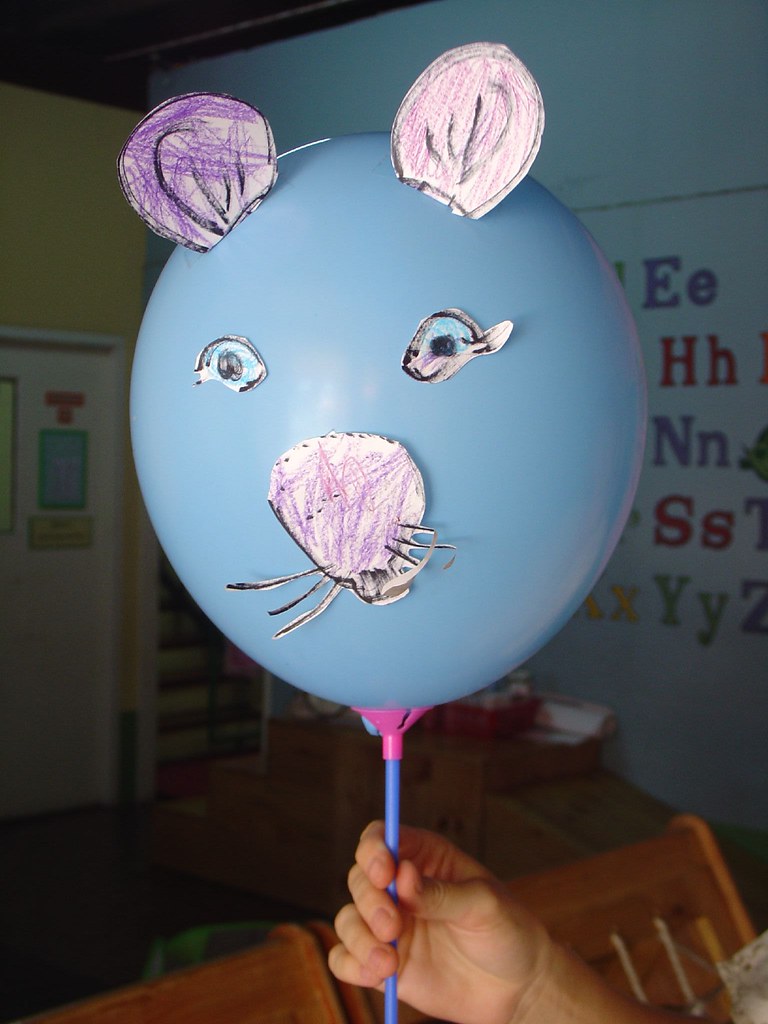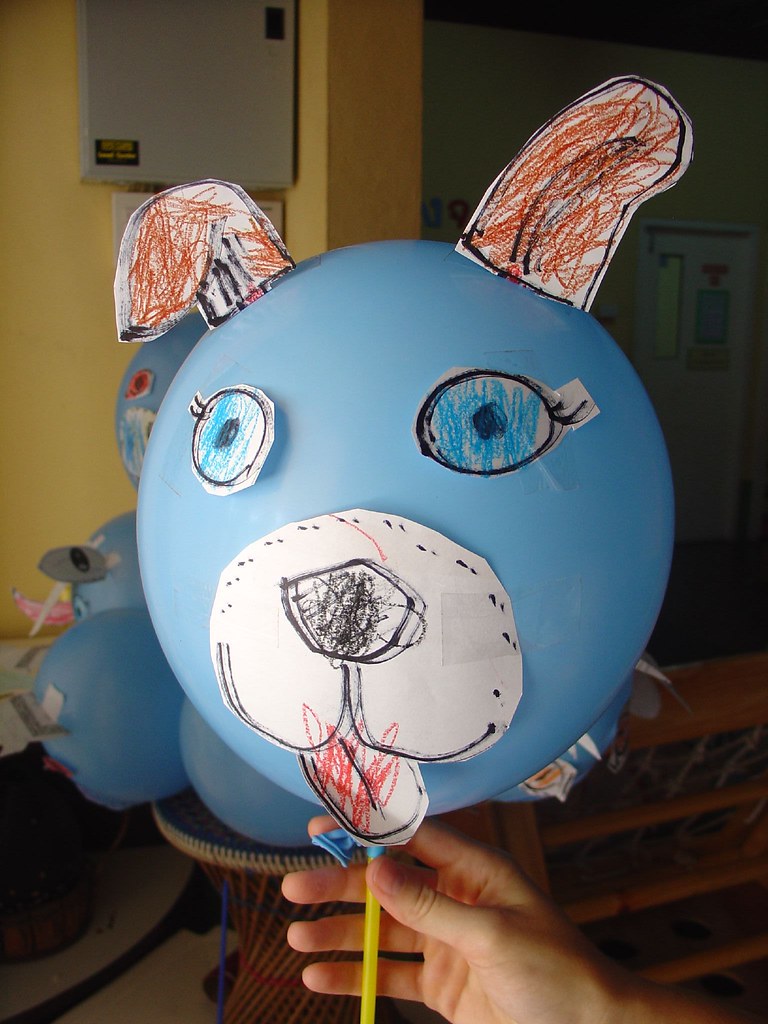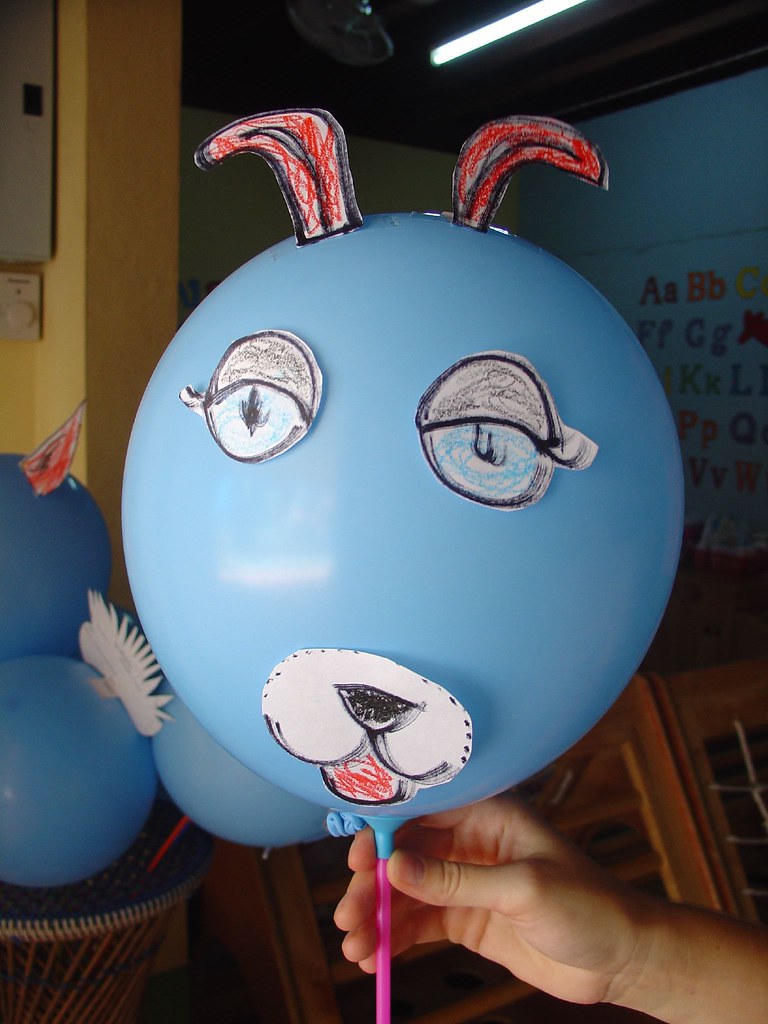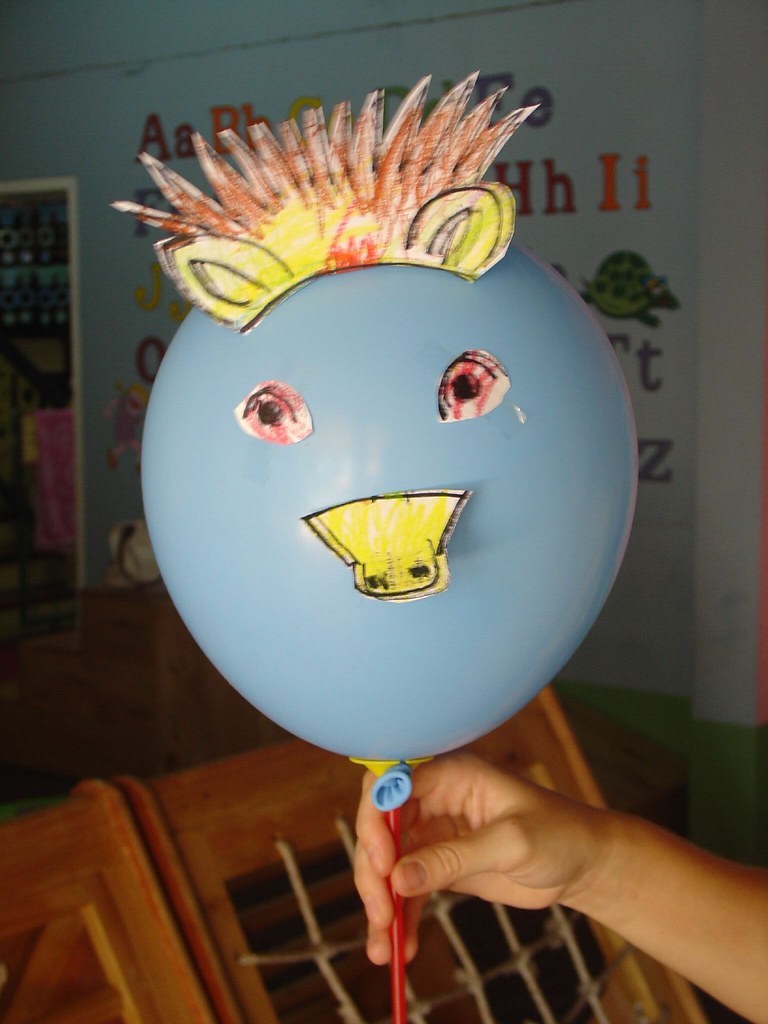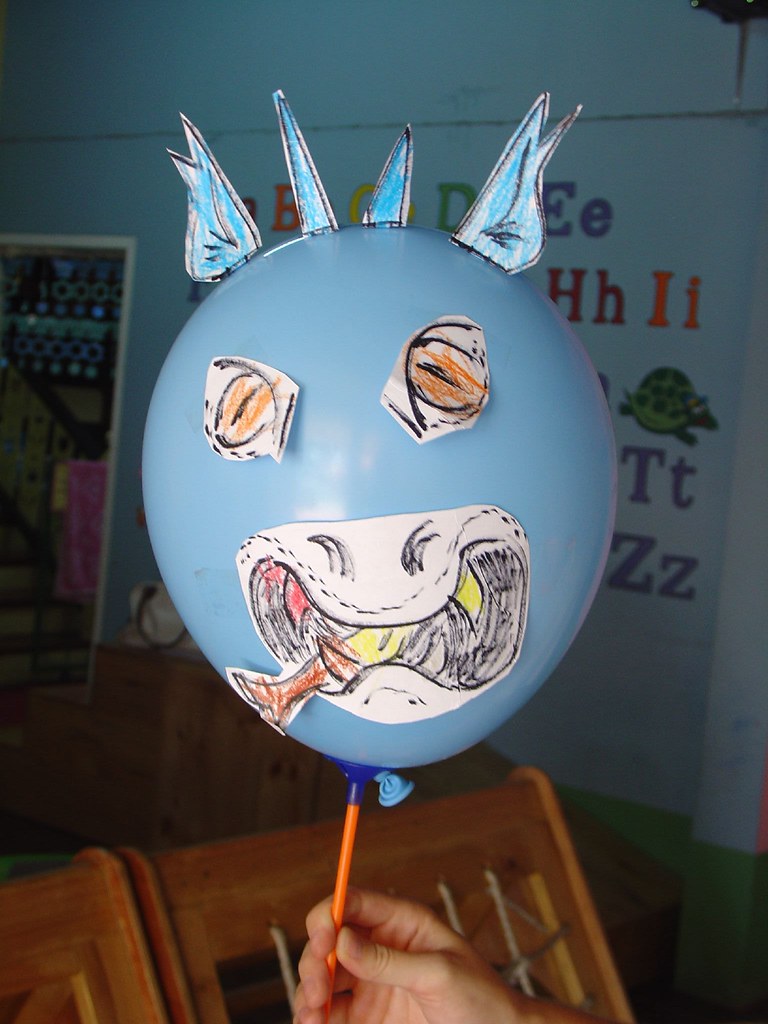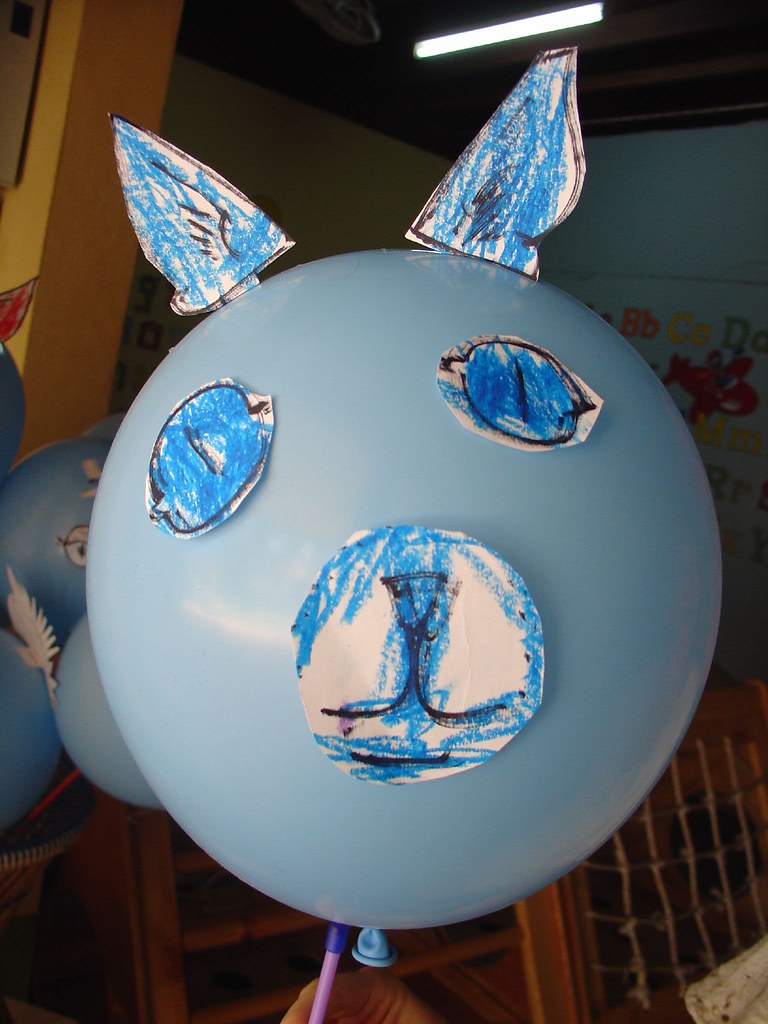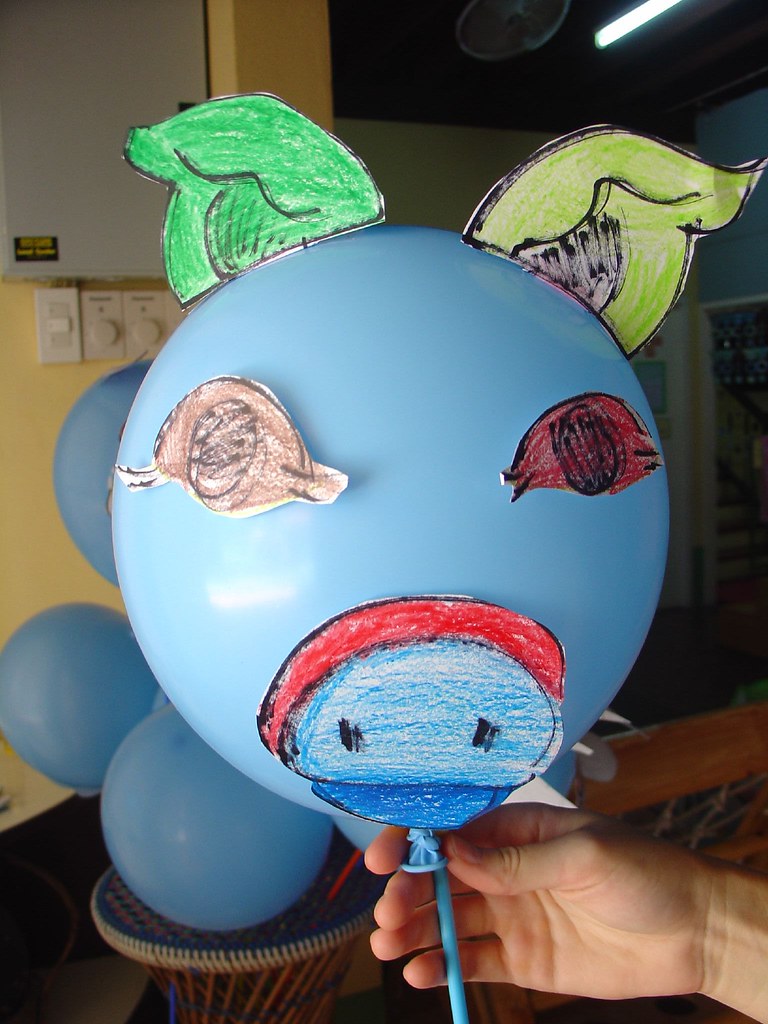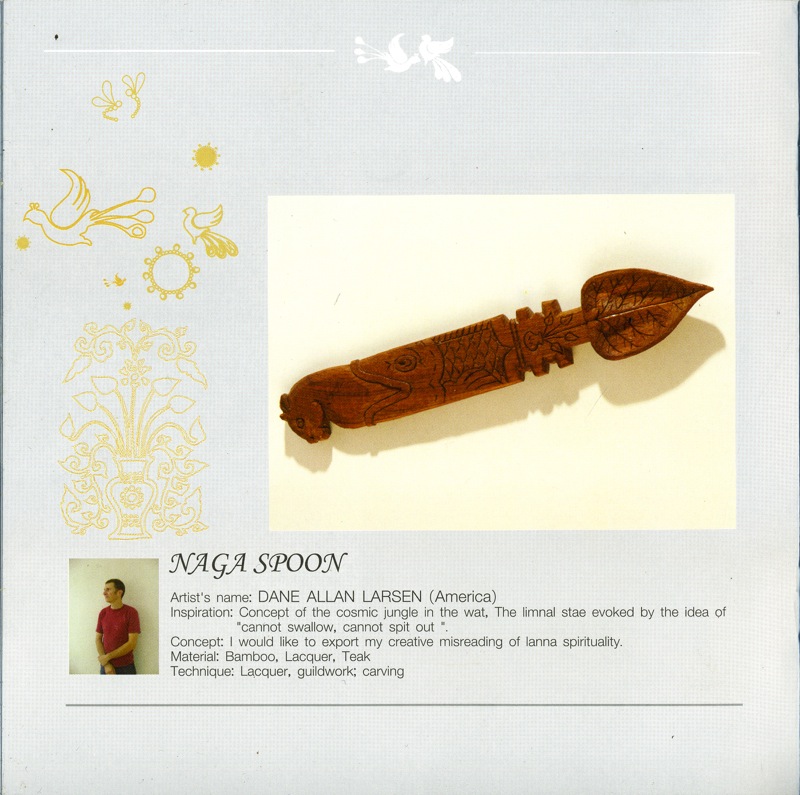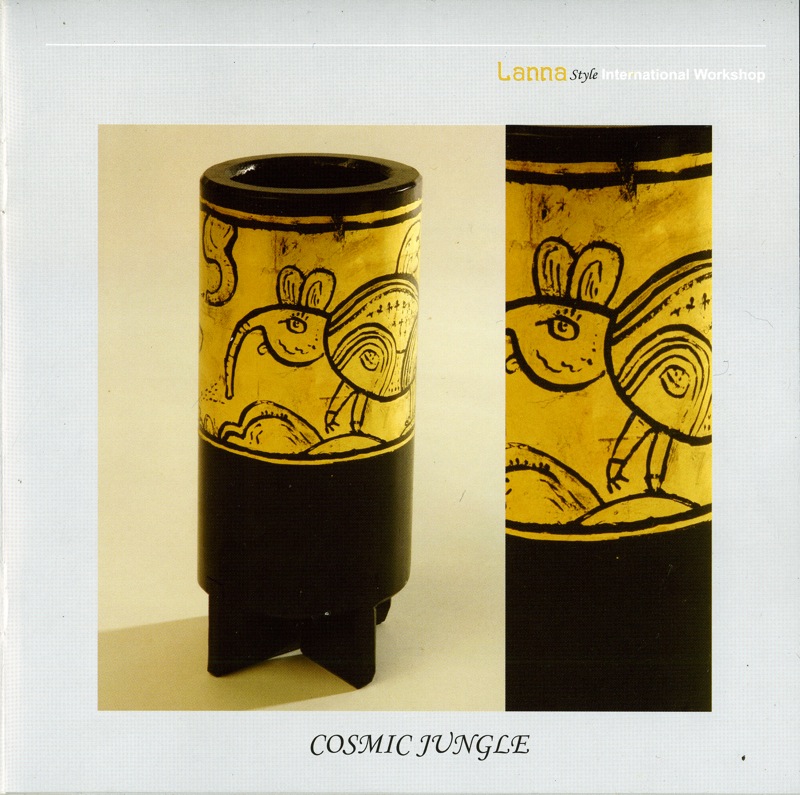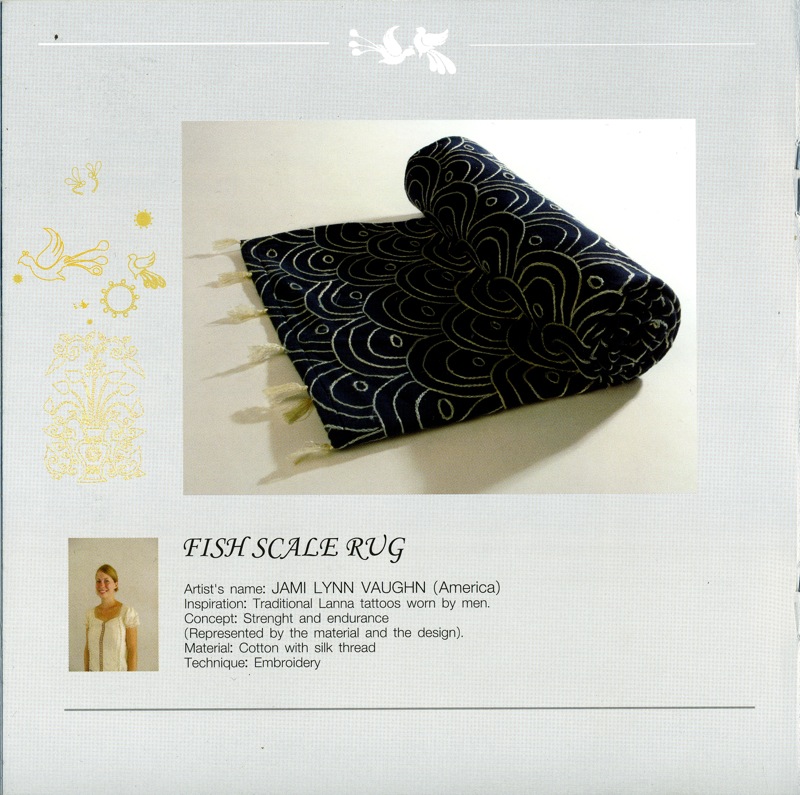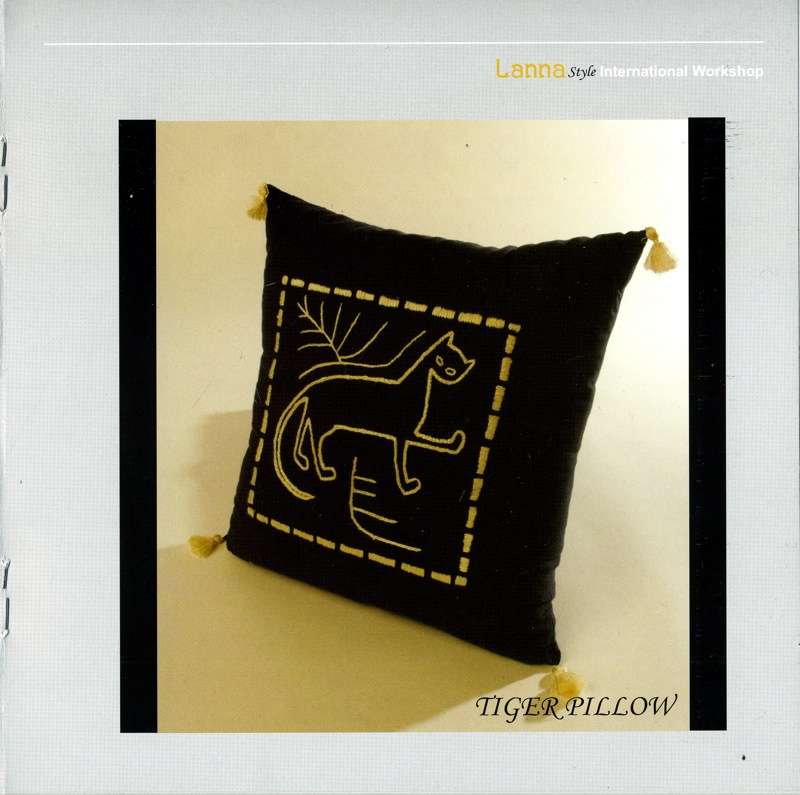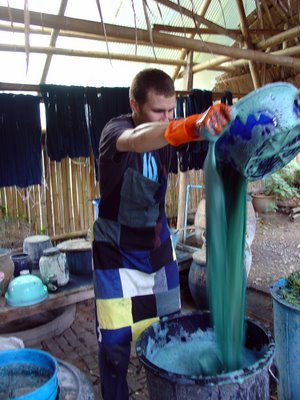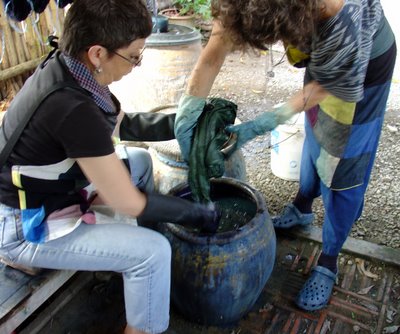02 March 2008
27 February 2008
Butcher Block

My mom, during one of her many pilgrimages to Northpark Mall, fell in love with a butcher block, at Anthropologie of all places. She came home grinning because, apparently, I'm going to make one for her. J and I were immediately sent to the mall to photograph the one there. It was a complete mess, looked like it had been assembled by three-year-olds, cost just under a thousand dollars, and was so stupidly put together that the end-grain top was already pulling itself apart. I explained to her what was wrong with it (a butt jointed frame around the top, unfortunately her favorite detail), and set about designing this one. I'd love to make it, all I need is a jointer, a thickness planer, and table saw. If any one knows where I can access said tools in Dallas, they would make my mother very happy.
Posted by
Dane
at
8:21 PM
0
comments
![]()
22 February 2008
Carving the Cradle
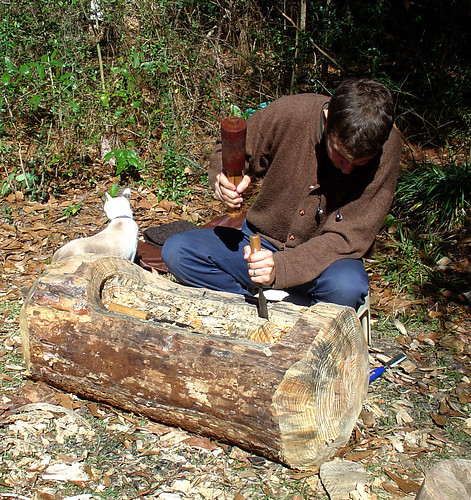
J took this a couple of weeks ago in Silsbee. Tien did an excellent job supervising me. Now Buibe, Louise, and Figgy supervise in shifts while Tien plays in the bushes.
Posted by
Dane
at
9:57 PM
0
comments
![]()
05 February 2008
Baby Mocs
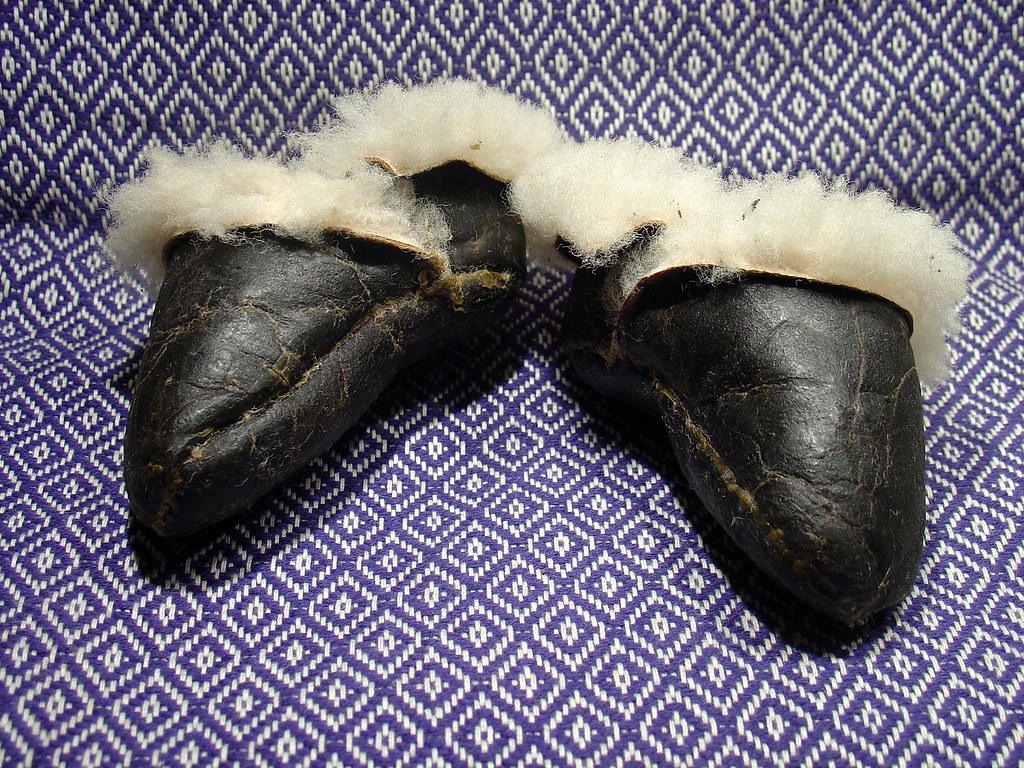
During our Silsbee interlude I've been hacking away at a piece of pine that blew down in the back yard during hurricane Rita. It rained today, however, so I wound up inside where I made some baby moccasins out of some old sheep skin I had left over from a rug I made years ago. I'm hoping they'll work for a 6-9 month old. The weaving they're sitting on is a hand-woven cotton blanket with a traditional Lanna (northern Thai) pattern.
Posted by
Dane
at
6:46 PM
2
comments
![]()
16 October 2007
Biciclette

Jami has started her very own craft blog. So far it is full of cute clothes and cute Tien dolls. Enjoy!
Posted by
Dane
at
1:18 AM
0
comments
![]()
24 September 2007
Balloon Animals
We made these in class today with the 3 &4 year olds. I think they turned out cute!
Posted by
Jami
at
12:12 AM
1 comments
![]()
Labels: animals, craft, Jami's posts, work
13 March 2007
Felting Human Hair
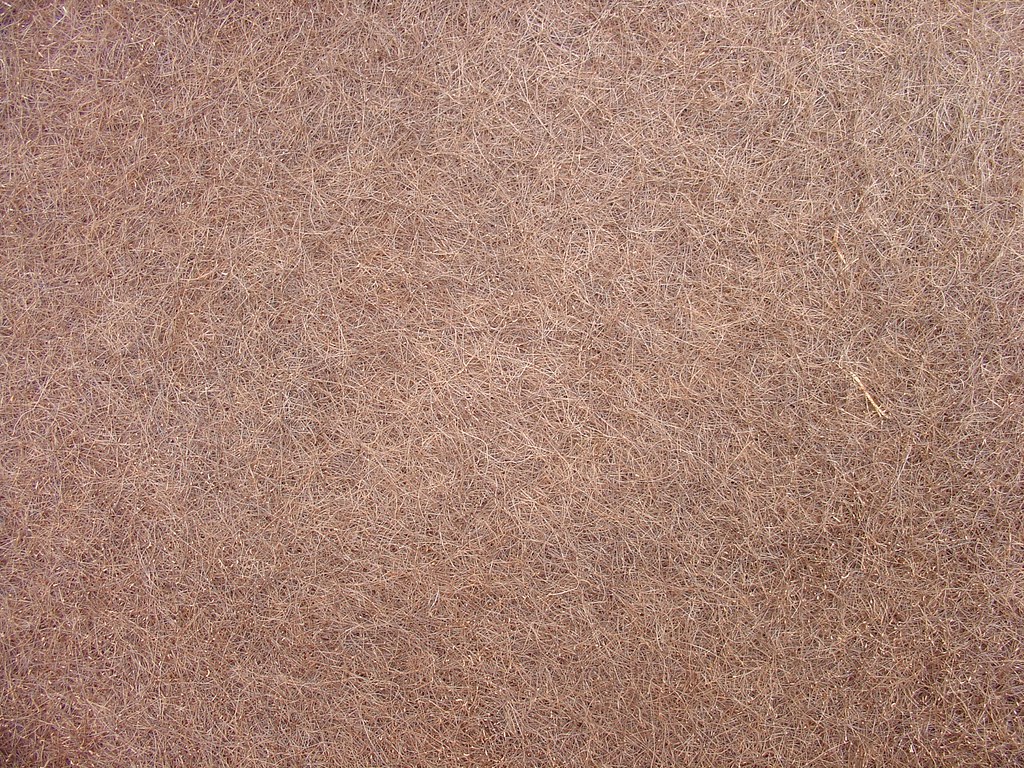
 Traditionally felt is made from finely textured animal hair. Hairs are covered with tiny scales (cuticle) which can be made to stand up due to dryness, dirt, or friction. Conditioner is designed to help the cuticle lay back down, rather than stick up and catch, causing tangles. Felt is made by stressing the hair with heat, harsh detergents, and friction. Rubbing stressed hairs against each other will cause the scales to catch and bind. The advantage of using fine animal hair, like wool, is that it will form a dense, even mat, the individual fibers becoming indistinguishable. Coarser hair, like human hair, will not form as nice a felt as wool, but it will felt. That's what dreadlocks are. Since human hair is so coarse it can't be treated like wool, which felts easily, requiring little more than hot water sometimes. Making felt from human hair is a slightly different process, almost like making a giant, flat dreadlock. Due to the stiffness of the individual hairs you might not be able to achieve a good, hard felt (I used my own hair, which is nearly as coarse as horse hair), but something between hard and soft is doable.
Traditionally felt is made from finely textured animal hair. Hairs are covered with tiny scales (cuticle) which can be made to stand up due to dryness, dirt, or friction. Conditioner is designed to help the cuticle lay back down, rather than stick up and catch, causing tangles. Felt is made by stressing the hair with heat, harsh detergents, and friction. Rubbing stressed hairs against each other will cause the scales to catch and bind. The advantage of using fine animal hair, like wool, is that it will form a dense, even mat, the individual fibers becoming indistinguishable. Coarser hair, like human hair, will not form as nice a felt as wool, but it will felt. That's what dreadlocks are. Since human hair is so coarse it can't be treated like wool, which felts easily, requiring little more than hot water sometimes. Making felt from human hair is a slightly different process, almost like making a giant, flat dreadlock. Due to the stiffness of the individual hairs you might not be able to achieve a good, hard felt (I used my own hair, which is nearly as coarse as horse hair), but something between hard and soft is doable.You need:
- as much hair as you can muster (longer is better, lengths under 1-1.5 inches will tend to fall out)
- bar soap
- warm water
- a water-safe, smooth, but uneven work surface (a tile floor would be ideal, or an old-fashioned washboard)
- an iron
2. Take small handfuls of hair and rub them against your work surface to form a sparse, flat, tangled mat. You should do this until the hair looks frazzled. A slightly dirty work surface might actually help at this point (more friction).
3. Once all the hair has been rubbed into flat little mats, wet your hands and soap them. Then rub each mat of hair between your palms until it stiffens. If they seem to fall apart too easily, try using less hair. Think of that nasty clump of hair you're always pulling out of the drain. These are just glorified versions of the same.
4. Lay these loosely felted mats together in the shape you want, two or three layers deep. Try to spread it as evenly as you can. The mats will be full of holes, which you can fill with smaller mats.
5. Gently rub each piece into its neighbors as you add it. Add dry hair between pieces if they don't seem to want to be friends.
6. Your piece should be nice and soapy at this point, but fragile. Rub it on your work surface, moving from the outside in until all the individual pieces have joined together. Once your piece is holding together well begin flipping it over every once in a while. After a few minutes you should have something like the second picture below.
7. If your piece is holding together well give it a rinse with cupfuls of hot water. Pick it up and look through it to see how thick it actually is, and to identify thin spots.
8. Return the piece to the work surface and soap it up again. Continue rubbing from the outside in, also working toward (but not directly on top of) the thin spots. If you have extra hair you can add to the thin spots do so now, before the fulling process is too far along.
9. Continue fulling until the felt is an even thickness (it naturally wants to be about 1/4 inch), and hard. It should be 1/2 to 1/3 the size of the piece you started with.
10. Rinse the piece again with warm water, and iron out the extra water. Use the iron to smooth the surface.
11. If the felt seems to have too many little hairs sticking out (this will depend on the stiffness and length of the hair used), you might try burning them off while the felt is still damp, then ironing off the burnt ends.
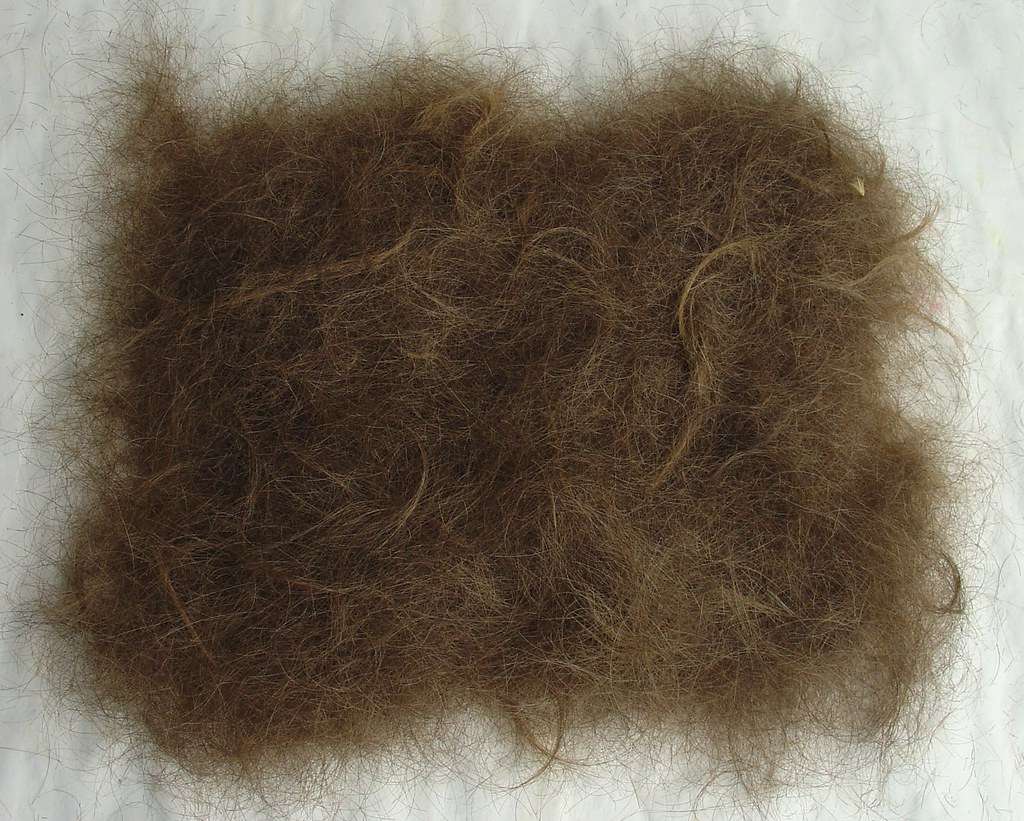
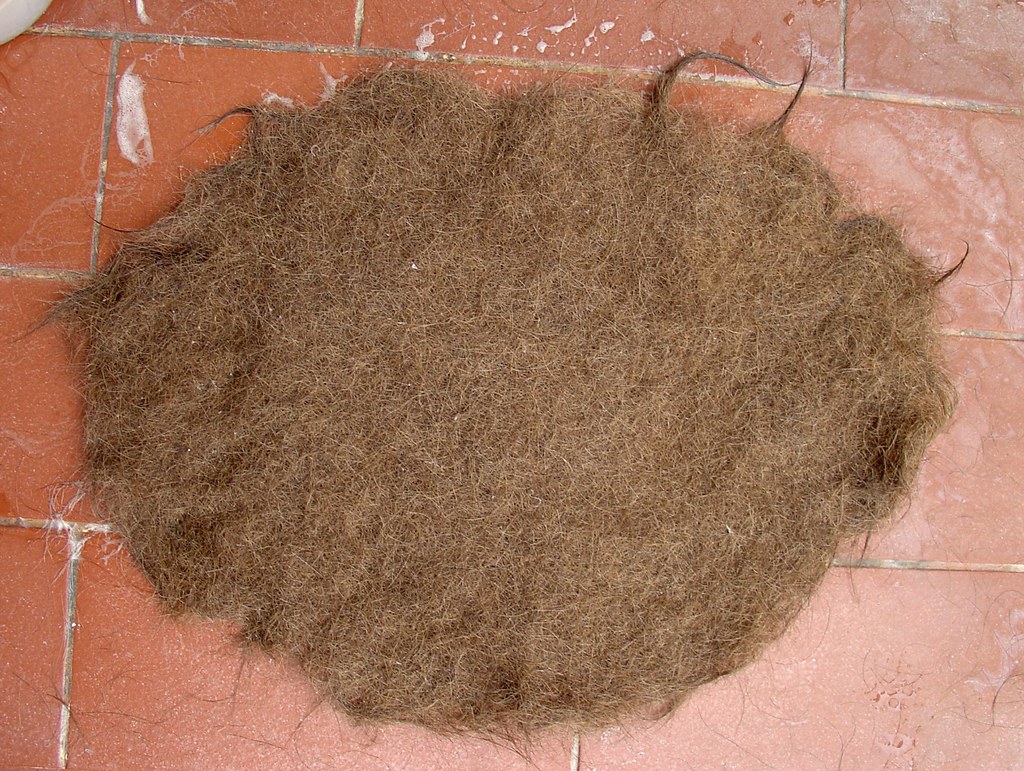

Posted by
Dane
at
6:36 AM
11
comments
![]()
24 November 2006
A Gar-Man

 No, the title of this post does not refer to the man-fishy form of the image at top. Yesterday morning, while Jami was at work, a friend and I went to a lecture given by the German artist Reinhold Engberding, UNESCO artist in residence at Chiang Mai University. We'd met him during the CDSC design workshop, and happened to run into him again at the opening for the prototype exhibit last Friday, when he invited us to attend his lecture. He presented his own work, and also that of his two collaborators Holger B. Nidden-Grien and Bartole St. Strip. For those of you whose German might be a little rusty both names are anagrams (the title of this post is an anagram of "anagram" in fact--hope I'm not blowin' yer mind, man), Holger B. Nidden-Grien being an anagram of Reinhold's own name, and Bartole St. Strip being an anagram of Selbstportrait (self-portrait). His work could be characterized by the anagram, and other almost math-like or geometric operations performed on different objects or materials.
No, the title of this post does not refer to the man-fishy form of the image at top. Yesterday morning, while Jami was at work, a friend and I went to a lecture given by the German artist Reinhold Engberding, UNESCO artist in residence at Chiang Mai University. We'd met him during the CDSC design workshop, and happened to run into him again at the opening for the prototype exhibit last Friday, when he invited us to attend his lecture. He presented his own work, and also that of his two collaborators Holger B. Nidden-Grien and Bartole St. Strip. For those of you whose German might be a little rusty both names are anagrams (the title of this post is an anagram of "anagram" in fact--hope I'm not blowin' yer mind, man), Holger B. Nidden-Grien being an anagram of Reinhold's own name, and Bartole St. Strip being an anagram of Selbstportrait (self-portrait). His work could be characterized by the anagram, and other almost math-like or geometric operations performed on different objects or materials.
The first works he showed us were about the creation of a fictional (and incestuous) ancestry for Nidden-Grien, including photos of his parents (old photopraphs of civil servants found in second hand shops) and a pleasantly abstract family tree made of circles, with Nidden-Grien in the center. The next sculptures were large pieces crocheted from black cotton, like the ones at top, and filled with either inflated condoms (which are stronger than balloons, he says) or ping-pong balls. The shapes of the crocheted works are often dictated by the number of balls of yarn used, with either a hole, or a point, or some other change in the shape occurring where a ball ends. When I asked how long the crochet pieces take, he said about one ball a day. Many of the pieces contain 50 balls or more, so well over a month each. It's the perfect medium for a TV junkie, he says.
Other bodies of work, not shown here due to their absence on the web (these images, by the way, are all scrounged from various German language websites which you can reach by clicking on the photos), are three groups of self-portraits, collaborations with Bartole St. Strip. The first involved taking pictures of different parts his own head and reassembling them in a grid, but with the parts rearranged, or taking pictures of parts from slightly different angles so that the reassembled image comes out distorted. A second group combined his own childhood photos with pictures of children taken in a sanitarium. The third was a group done in collaboration with a village in which the work was exhibited. Villagers all roughly his age loaned childhood photos over which he placed (in Photoshop) a semitransparent layer of solid color, and then drew through that layer of color (using the erase tool) an image of himself at that age, revealing parts of the appropriated photograph beneath. This large and rather forlorn, felt teddy bear is related thematically to the sanitarium self-portraits, and I believe done around the same time.
This large and rather forlorn, felt teddy bear is related thematically to the sanitarium self-portraits, and I believe done around the same time.
Reinhold's most recent work, done during a residency in Bern, Switzerland, uses second-hand jackets. He finds two of roughly the same size and turns one sleeve inside out on each jacket, then inserts the inside out sleeves into the right side out sleeves, and sews the jackets together. The effect is rather like that of a gossip's seat (pictured below) made of jackets. Two men standing back to back can wear half a jacket each.
 Another piece, related to the jackets, is this group of vests, turned inside out and sewn together sleeve to sleeve. During his stay in Switzerland, Reinhold was able to visit the widow of one of his old professors. When she learned he was working with jackets she offered him several of her husband's old ones. Not sure he wanted to use material that was so personal, and so emotionally charged, he refused them at first. But upon her insistence he decided to use just the vests, and created what I think is a tactful and appropriate memorial.
Another piece, related to the jackets, is this group of vests, turned inside out and sewn together sleeve to sleeve. During his stay in Switzerland, Reinhold was able to visit the widow of one of his old professors. When she learned he was working with jackets she offered him several of her husband's old ones. Not sure he wanted to use material that was so personal, and so emotionally charged, he refused them at first. But upon her insistence he decided to use just the vests, and created what I think is a tactful and appropriate memorial.
Posted by
Dane
at
2:48 AM
1 comments
![]()
07 November 2006
CDSC Update
 Since I originally posted about the Craft and Design Service Center workshop J and I participated in, various bits of it have begun to appear on the web, including this picture of me looking like a total spaz. I'm actually sanding that nearly invisible black object in my lap.
Since I originally posted about the Craft and Design Service Center workshop J and I participated in, various bits of it have begun to appear on the web, including this picture of me looking like a total spaz. I'm actually sanding that nearly invisible black object in my lap. I'll continue to update this post as more things appear:
I'll continue to update this post as more things appear:
Photos on the CMU website.
Video on the CMU website. This will only play on Windows machines, so I still haven't seen it.
Post on Dave Besseling's blog about the workshop.
22 November 2006
On 17 November the CDSC had an opening for the Lanna Design Style Prototype Exhibit. It will be open from the 17th to the 26th at JJ Market.
My sketchbook containing notes from Vithi's lectures and sketches related to the workshop has been uploaded to the Internet Archive.
10 December 2006
These are our pages from the catalog:
Posted by
Dane
at
7:46 AM
1 comments
![]()
Labels: art, CDSC, craft, design, sketchbooks
27 October 2006
Indigo Workshop

Ever since I started sewing, I've had an interest in natural dyes. A few weeks ago during the height of indigo season I attended a three day indigo workshop at Studio Naenna. The first day we went out into a neighboring field and cut several wheel barrow loads of indigo. We wrapped the leggy plants into bundles, then carefully filled about 8 garbage cans with 15 kilos worth of bundles and water to cover them. Then we placed a rock on top to keep them from floating up. As the bundles soaked over night the indigo pigment leached out of them, and on day 2 they were ready for "beating." Dane came on the second day to take the place of a sick participant, and we were glad for the extra muscle. In the "beating" process, you incorporate builders lime into the indigo-laced water by scooping and pouring the water back and forth in the can. The process is complete once the water has turned from a light green to a dark blue, and takes about 20 minutes of scooping and pouring!
The workshop instructor didn't let anything go to waste. She had pans to catch every little splash from the beating, and the bundles that we removed from the water previously were dried in the sun to be burned later. The ashes are used to make ash water, the mordant for the dye. After beating the fresh buckets we began to dye our fabrics using an existing dye pot. Good indigo dye pots are maintained in a very delicate balance. Before dying anything, you have to scoop out a cup full of the dye to add back to the pot at the end to replenish the exhausted dye. It's a bit like making yogurt or sourdough bread, with cultures and all. Dane and I dyed handwoven cotton, pictured above, that we purchased from the studio. The fabric is narrow because it's woven on a backstrap loom.

On day 3 we filtered the water that we beat the day before through a tightly woven cloth to collect the indigo paste that settles to the bottom. It's this paste combined with ash water, sugar, an indigo culture, and a little alcohol that makes the dye. In fact, the dye is a dark olive green instead of blue. The fabric turns blue once it hits the air and oxidizes. It's a really amazing process.
Posted by
Jami
at
4:56 AM
0
comments
![]()
Labels: craft, Jami's posts
16 October 2006
"Believe" Lanna Style: Or How Does a Horse Eat a Japanese Ceramicist: Or How to Eat a Bug Sober
Our design workshop began two weeks ago Monday, and ended last Saturday. It was hosted by the Chiang Mai University Faculty of Fine Art Craft and Design Service Center. The real name of the workshop ("Believe" Lanna Style International Workshop) was almost as long as the organization hosting it. Monday morning began with two excellent presentations by Professor Vithi Panitchapun covering Northern Thailand's history, culture, and visual culture (I have both power points saved as PDFs, they really are great, but it might not be that nice of me to upload them without permission, but if anyone is interested I could send them a copy). After Vithi's presentations he took us around Chiang Mai and Lampang for two days. It reminded us a bit of being in Italy, the tour bus rolling through the green hills, but tropical.
I found out about the workshop the night before it began thanks to our housemate AS. Apparently two designers had canceled, AS had been invited by a friend to participate, but decided that producing two prototypes in two weeks might not be his cup of tea. So he passed the buck to me (Jami and I both thank him for that), and I agreed to do it, not really knowing what I'd be getting into. Jami came with me the first day, just for the lecture, and since they were still one person shy of a quorum they begged her to join.
Day One:
 We visited many, many wats in Chiang Mai that first day. This was a small one in a larger compound near the center of town.
We visited many, many wats in Chiang Mai that first day. This was a small one in a larger compound near the center of town. There are many different "brands" of singha (temple dogs) according to Vithi. This nifty feller with the pageboy hairdo is pretty unique.
There are many different "brands" of singha (temple dogs) according to Vithi. This nifty feller with the pageboy hairdo is pretty unique. This crackly glass is a unique, lead-backed type. It can actually be cut with scissors. The art of making it has been lost, however. So people strip it from the old wats, sell it by the kilo, and replace it with crummy colored mirror.
This crackly glass is a unique, lead-backed type. It can actually be cut with scissors. The art of making it has been lost, however. So people strip it from the old wats, sell it by the kilo, and replace it with crummy colored mirror.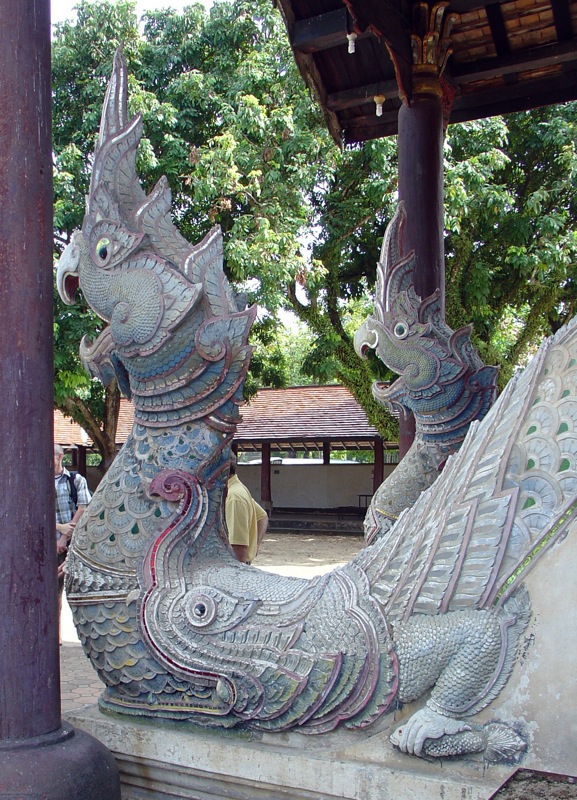 This water-serpent naga with a mouthful of parrot-head naga is pretty typical of Thai Buddhist iconography. It is referred to as "klean mai khaw, klay mai oak," or "cannot swallow, cannot spit out." Situated at the foot of the steps leading to the entrance of a wat this creates a powerful linimal zone, where one can either continue on towards enlightenment, or back to the world, or neither, as one becomes entangled in a visual and spiritual aporia.
This water-serpent naga with a mouthful of parrot-head naga is pretty typical of Thai Buddhist iconography. It is referred to as "klean mai khaw, klay mai oak," or "cannot swallow, cannot spit out." Situated at the foot of the steps leading to the entrance of a wat this creates a powerful linimal zone, where one can either continue on towards enlightenment, or back to the world, or neither, as one becomes entangled in a visual and spiritual aporia.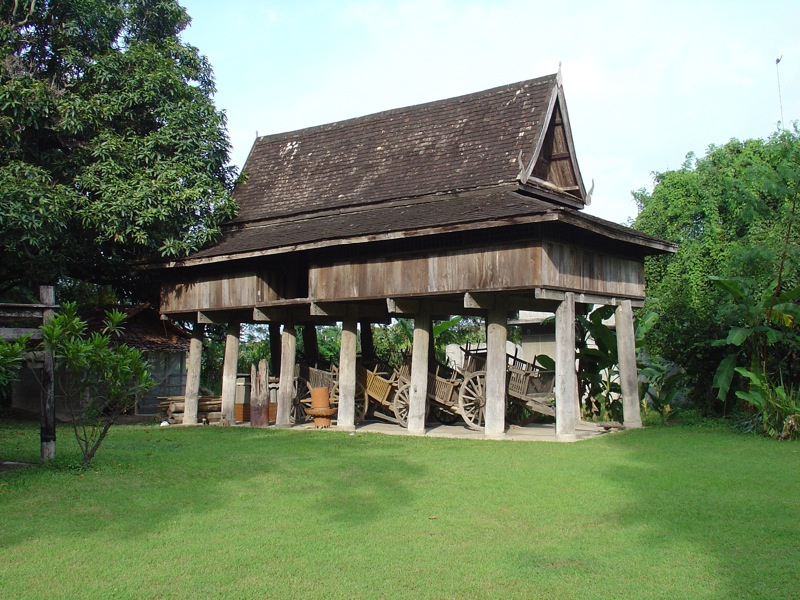 A fine rice house, used only for storage. The form is a lot like granaries from as far away as Portugal. There is a Lanna folk tradition, that as a boy went out to search for a girl to marry (Lanna culture is matrilineal, so the boy marries into the girl's family) he wanted to find a family with a rice house with more than six post (too few and he would starve, not enough rice), and less than fourteen (too many and he would have to work harder that a water buffalo). This one is on the large side.
A fine rice house, used only for storage. The form is a lot like granaries from as far away as Portugal. There is a Lanna folk tradition, that as a boy went out to search for a girl to marry (Lanna culture is matrilineal, so the boy marries into the girl's family) he wanted to find a family with a rice house with more than six post (too few and he would starve, not enough rice), and less than fourteen (too many and he would have to work harder that a water buffalo). This one is on the large side. Just a little gratuitous anthropophagy. Because nothing tastes quite like people.
Just a little gratuitous anthropophagy. Because nothing tastes quite like people.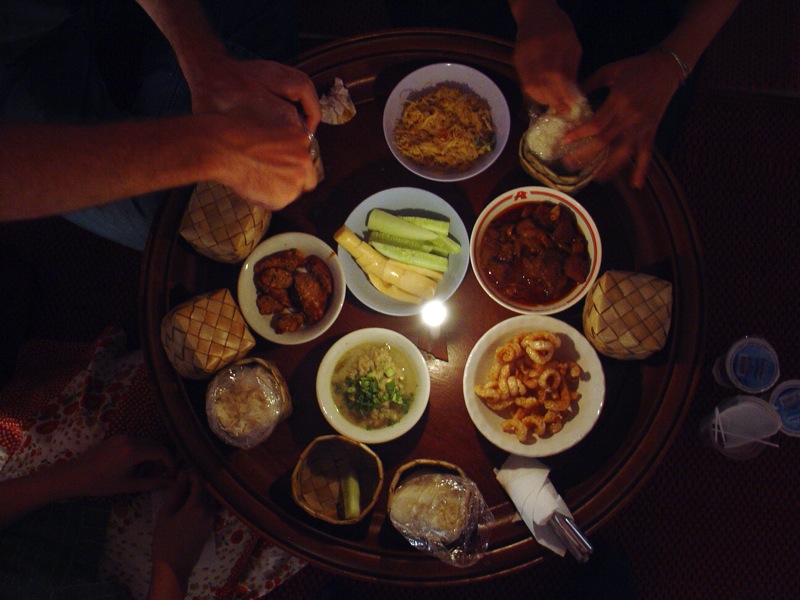 After a full day of lectures and touring we went to the Chiang Mai university campus for an evening of food, music and dance. Northern Thai food is a sight better than people, though I would have eaten that curry no matter what was in it. Maybe that's what the anthropophagi were making.
After a full day of lectures and touring we went to the Chiang Mai university campus for an evening of food, music and dance. Northern Thai food is a sight better than people, though I would have eaten that curry no matter what was in it. Maybe that's what the anthropophagi were making.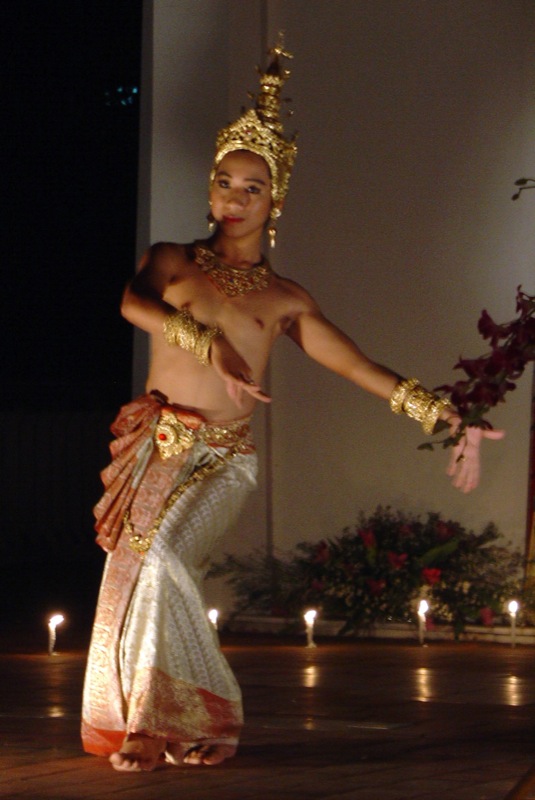 Nice hat?
Nice hat?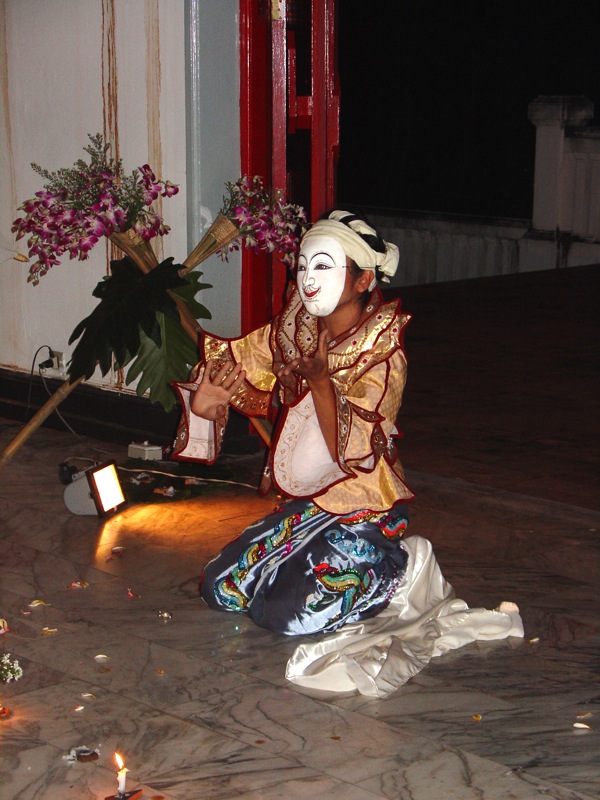 This mask dance was one of our favorites.
This mask dance was one of our favorites.We call this one, informally, the butterfly dance, though it could be of a bird or a bat. We don't know much about traditional Thai dance yet, but we have been told that the different hand positions have different meanings.
Day Two:
 Day two began early with a visit to a tiny little wat outside of Lampang, and it didn't end until about 16 hrs later. Wat Pongyangkok is about three hundred years old. Originally it stood on a platform one meter above the ground, but now it sits about eight inches below. It is unique in that it has retained its open-air form. Normally villagers "restore"their wats by putting brick and stucco walls between the outer posts, and then covering the thing with bits of colored mirror and sheets of gold colored flashing.
Day two began early with a visit to a tiny little wat outside of Lampang, and it didn't end until about 16 hrs later. Wat Pongyangkok is about three hundred years old. Originally it stood on a platform one meter above the ground, but now it sits about eight inches below. It is unique in that it has retained its open-air form. Normally villagers "restore"their wats by putting brick and stucco walls between the outer posts, and then covering the thing with bits of colored mirror and sheets of gold colored flashing.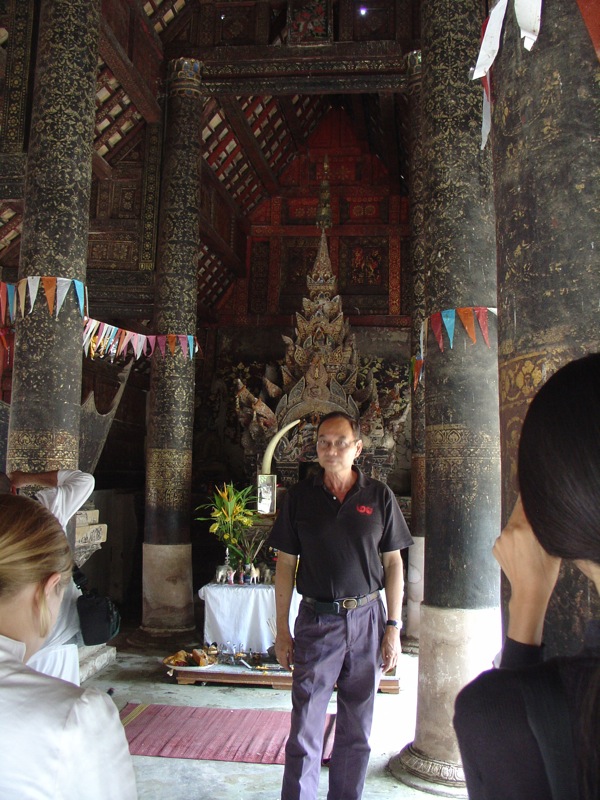 Vithi in the interior of Wat Pongyangkok. Also: the back of Jami's head, and the back of Nok's head.
Vithi in the interior of Wat Pongyangkok. Also: the back of Jami's head, and the back of Nok's head.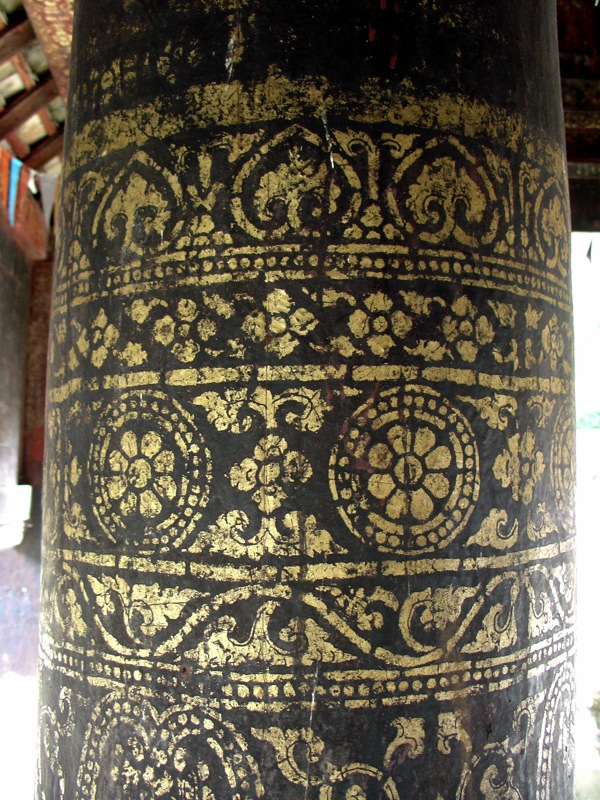 The pillars in Wat Pongyangkok were just amazing. They are covered with lacquer and goldleaf. On our Flickr page you can see how this is done, since they were the inspiration for one of my designs.
The pillars in Wat Pongyangkok were just amazing. They are covered with lacquer and goldleaf. On our Flickr page you can see how this is done, since they were the inspiration for one of my designs. Our next stop, and the last one I'll talk about in any detail, was Wat Phrathat Lampangluang in Lampang. It is an old citadel type wat, esablished 800 year ago, though its current incarnation is 15th century. In the photo you can see a tree inside the walls off to the left (not the palm tree). There is a legend that the Buddha passed through here on his travels. A Luah man (Austro-Asiatic ethnic group) offered him a piece of bamboo full of honey, and he was so happy having met the Buddha that he wandered off without his walking stick, leaving it stuck in the ground. When he came back the walking stick had sprouted, and grown into a tree. However, it had been put in the ground upside down, so the branches sloped downwards instead of up and the leaves were upside down. As legend has it that tree is here.
Our next stop, and the last one I'll talk about in any detail, was Wat Phrathat Lampangluang in Lampang. It is an old citadel type wat, esablished 800 year ago, though its current incarnation is 15th century. In the photo you can see a tree inside the walls off to the left (not the palm tree). There is a legend that the Buddha passed through here on his travels. A Luah man (Austro-Asiatic ethnic group) offered him a piece of bamboo full of honey, and he was so happy having met the Buddha that he wandered off without his walking stick, leaving it stuck in the ground. When he came back the walking stick had sprouted, and grown into a tree. However, it had been put in the ground upside down, so the branches sloped downwards instead of up and the leaves were upside down. As legend has it that tree is here. So how does a horse eat a Japanese Ceramicist? He sniffs along, sniffs along, takes a little bite. Sniffs along, sniffs along, takes a bigger bite. Sniffs along, sniffs along...
So how does a horse eat a Japanese Ceramicist? He sniffs along, sniffs along, takes a little bite. Sniffs along, sniffs along, takes a bigger bite. Sniffs along, sniffs along...Masamichi Yoshiakawa was one of the artists participating in this workshop (he and his wife Chikako). He thought it might be neat to pet this little pony, which promptly took a chunk out of his arm. In this photo here, you can see a blurry Masamichi with his sleeve rolled up to keep it out of the wound.
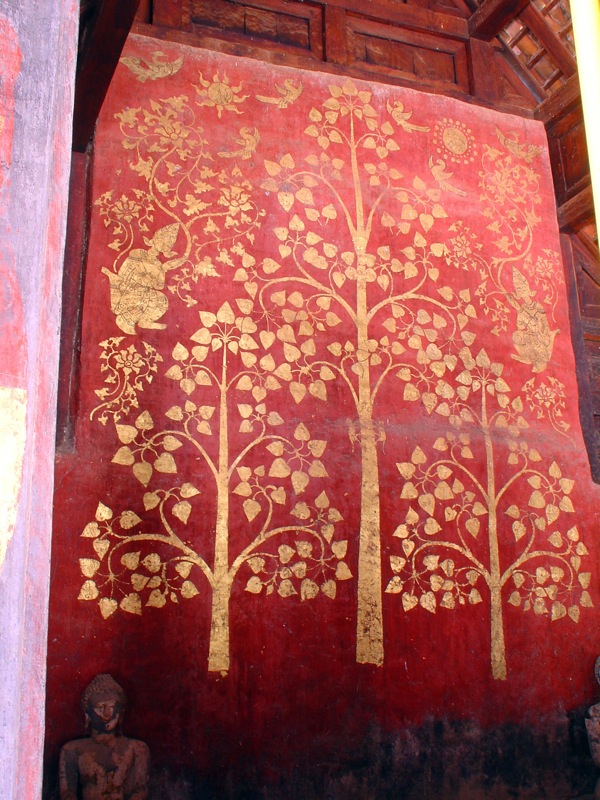 This was a particularly nice bodhi tree. These paintings typically back the Buddha images in the depths of the wat.
This was a particularly nice bodhi tree. These paintings typically back the Buddha images in the depths of the wat.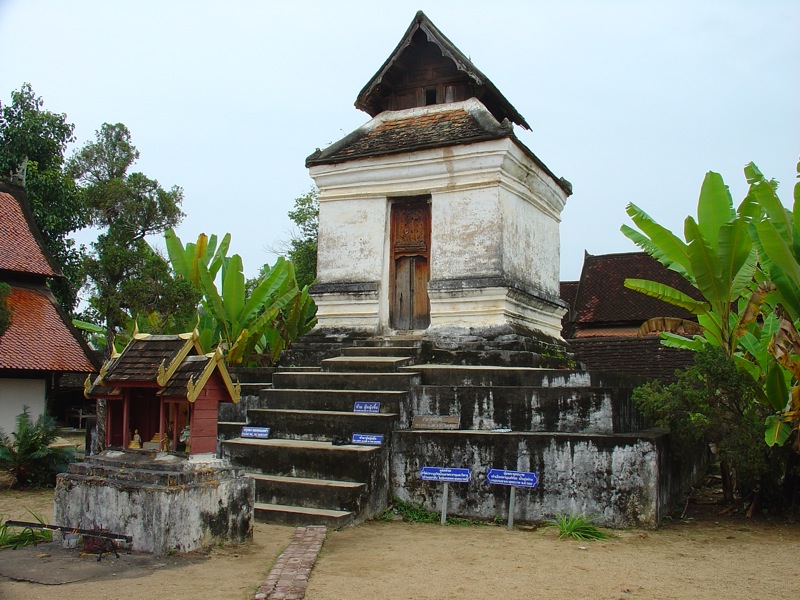 This little shrine at Wat Phrathat Lampangluang is covered with white on blue signs that say "NO GIRLS ALLOWED!"
This little shrine at Wat Phrathat Lampangluang is covered with white on blue signs that say "NO GIRLS ALLOWED!"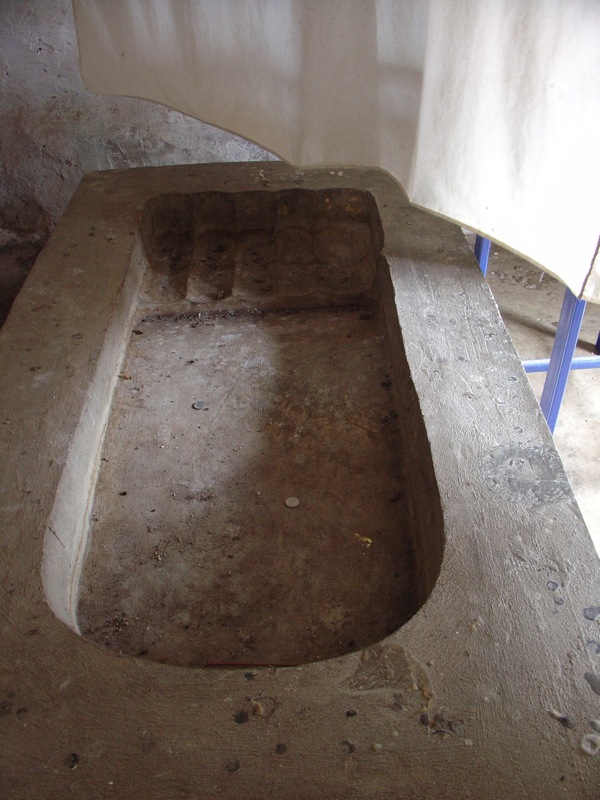 Inside is the footprint of the Buddha, who, even in life, had very large, stylized feet.
Inside is the footprint of the Buddha, who, even in life, had very large, stylized feet. The room also acts as a camera obscura, which allows you to see an image of this stuppa...
The room also acts as a camera obscura, which allows you to see an image of this stuppa...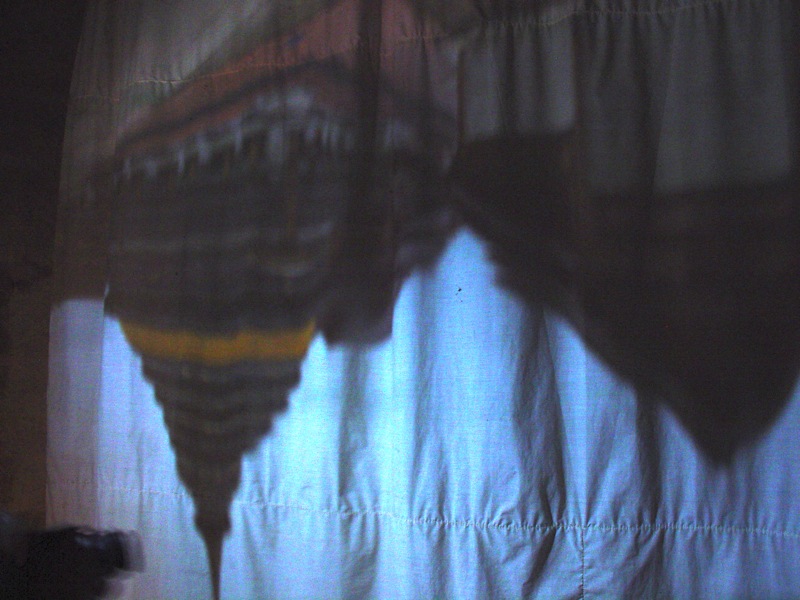 upside down.
upside down.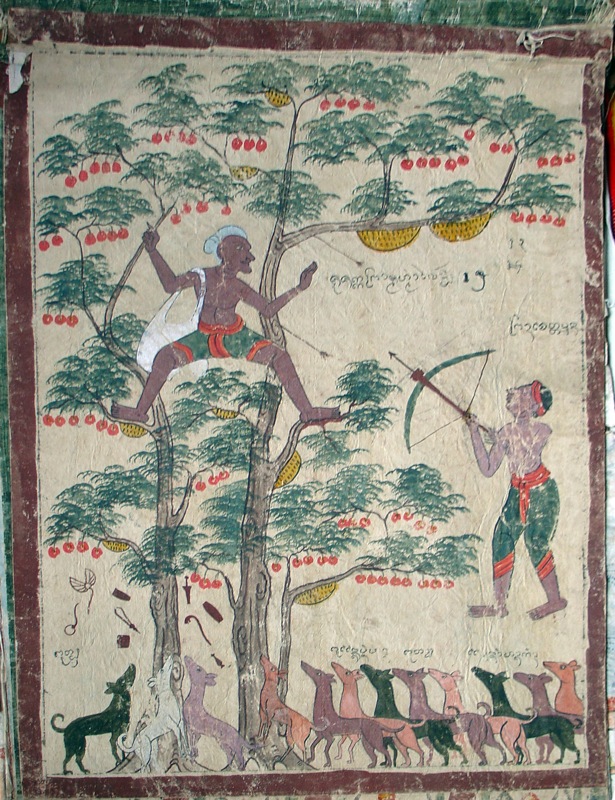 In the afternoon after lunch at Vithi's colonial era house in Lampang he took us to a wat where two large groups of hundred year old paintings had been discovered in the ceiling. This was one of my favorites, with the vagabond treed by a huge pack of dogs, and things dropping from his bag.
In the afternoon after lunch at Vithi's colonial era house in Lampang he took us to a wat where two large groups of hundred year old paintings had been discovered in the ceiling. This was one of my favorites, with the vagabond treed by a huge pack of dogs, and things dropping from his bag. The last wat we visited was fairly recent (about 100 years old), way out in the country and very, very folksy. Jami found this little guy holding up the pulpit, and he was just too cute not to share.
The last wat we visited was fairly recent (about 100 years old), way out in the country and very, very folksy. Jami found this little guy holding up the pulpit, and he was just too cute not to share.Days three through twelve:
These days include our trip to Maesai, Jami's indigo work shop at Studio Naenna (which she will write a post about, I already uploaded a video about it), and lots of work on our projects. We began the workshop not quite sure what we were supposed to be doing (the idea for my first project came suddenly as a complete image about ten minutes before I began talking to my assistant to tell him what materials I'd need), and it wasn't made clear to us that we actually needed to make two prototypes until Friday.
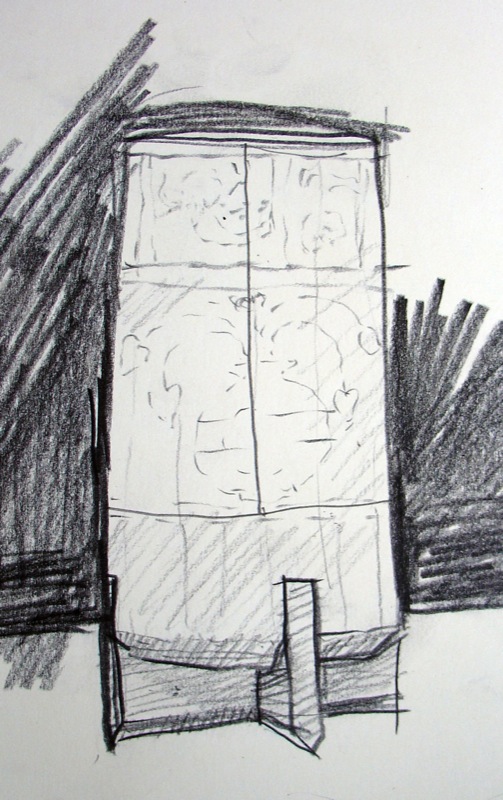 My original idea was to make a section of a column from a temple out of solid teak. A twenty four inch piece of solid teak, eight inches in diameter, proved to be hard to find, and would have been way heavy.
My original idea was to make a section of a column from a temple out of solid teak. A twenty four inch piece of solid teak, eight inches in diameter, proved to be hard to find, and would have been way heavy.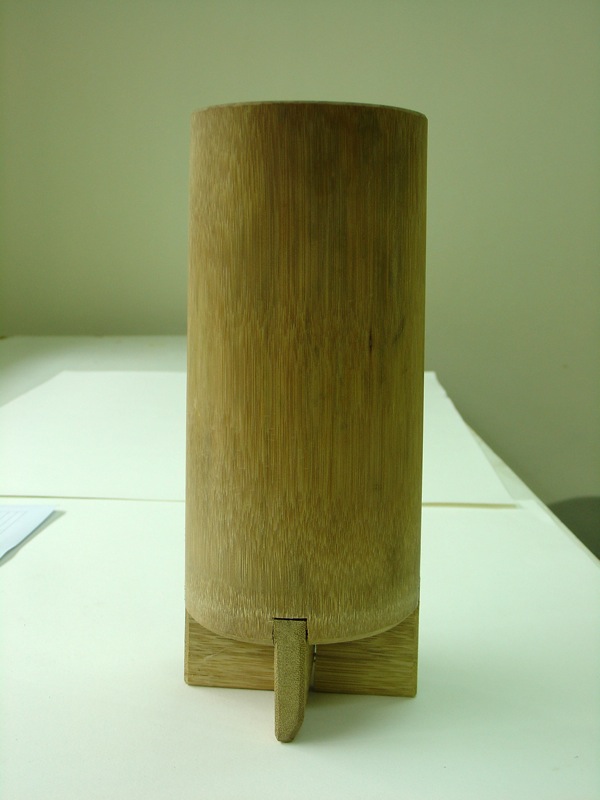 So I settled on bamboo, and turned it into a vessel. The base is inspired by the little feet on sticky rice baskets.
So I settled on bamboo, and turned it into a vessel. The base is inspired by the little feet on sticky rice baskets.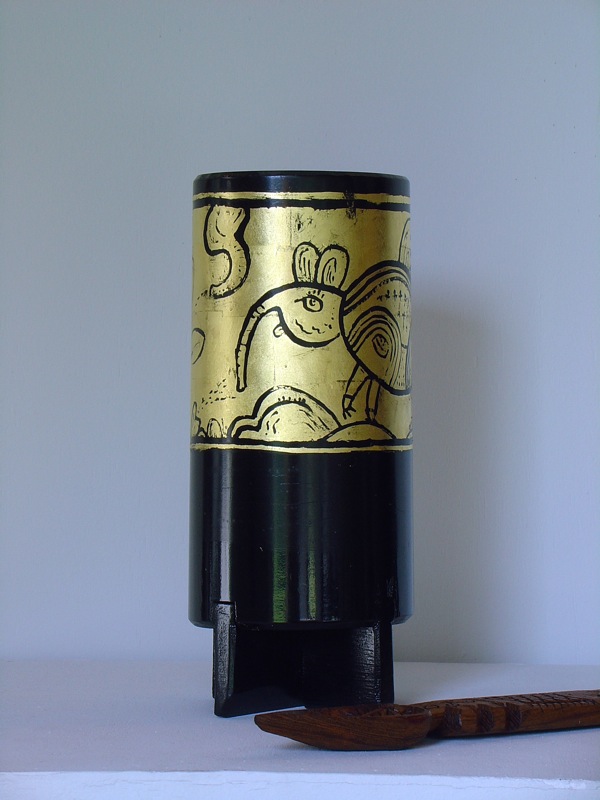 I think it turned out alright. I like the gold leaf on the black lacquer, but I kind of have a thing against precious materials, so I don't know if there will be a repeat (unless someone pays me to it). The part of the wat occupied by the pillars represents the Cosmic Jungle in the Theravada Buddhist cosmology. In our own American secular spiritual tradition (if that's not an oxymoron), i.e. Transcendentalism, we go to the woods to gain enlightenment (or at least you do if you are a genteel resident of Concord, Mass and have the luxury of romanticizing nature). In Therevada Buddhism you have to pass through the woods, then traverse seven rings of mountains, and then climb an even bigger mountain, only to find Siddhartha Gautama already sitting there. So I decided that it would be nice to package a piece of the Cosmic Jungle for export to the west.
I think it turned out alright. I like the gold leaf on the black lacquer, but I kind of have a thing against precious materials, so I don't know if there will be a repeat (unless someone pays me to it). The part of the wat occupied by the pillars represents the Cosmic Jungle in the Theravada Buddhist cosmology. In our own American secular spiritual tradition (if that's not an oxymoron), i.e. Transcendentalism, we go to the woods to gain enlightenment (or at least you do if you are a genteel resident of Concord, Mass and have the luxury of romanticizing nature). In Therevada Buddhism you have to pass through the woods, then traverse seven rings of mountains, and then climb an even bigger mountain, only to find Siddhartha Gautama already sitting there. So I decided that it would be nice to package a piece of the Cosmic Jungle for export to the west.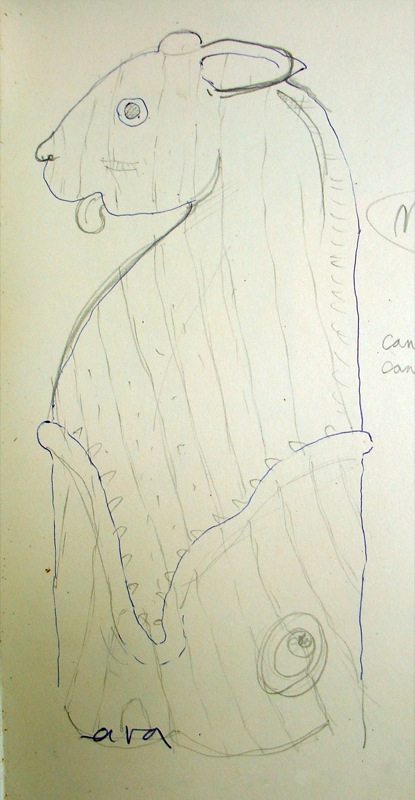 The naga love spoon went through many stages of revision. I even had a completely different piece roughed out before I decided that I hated it (our friend LB might recognize the remains of her name and email address which I erased from the bottom of this drawing. No spam for her).
The naga love spoon went through many stages of revision. I even had a completely different piece roughed out before I decided that I hated it (our friend LB might recognize the remains of her name and email address which I erased from the bottom of this drawing. No spam for her).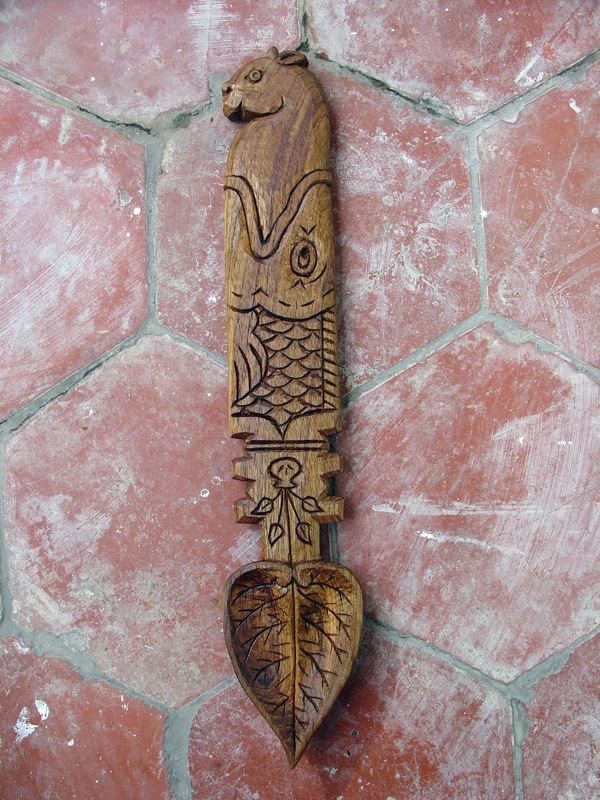 The overwhelming response from the Thai regarding this spoon was, "so cute!" the leaf forming the bowl is, of course, a bodhi leaf.
The overwhelming response from the Thai regarding this spoon was, "so cute!" the leaf forming the bowl is, of course, a bodhi leaf.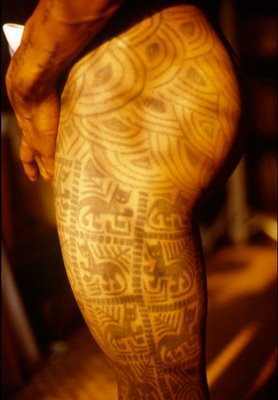 Jami's project involved tattooing male cabaret dancers.
Jami's project involved tattooing male cabaret dancers.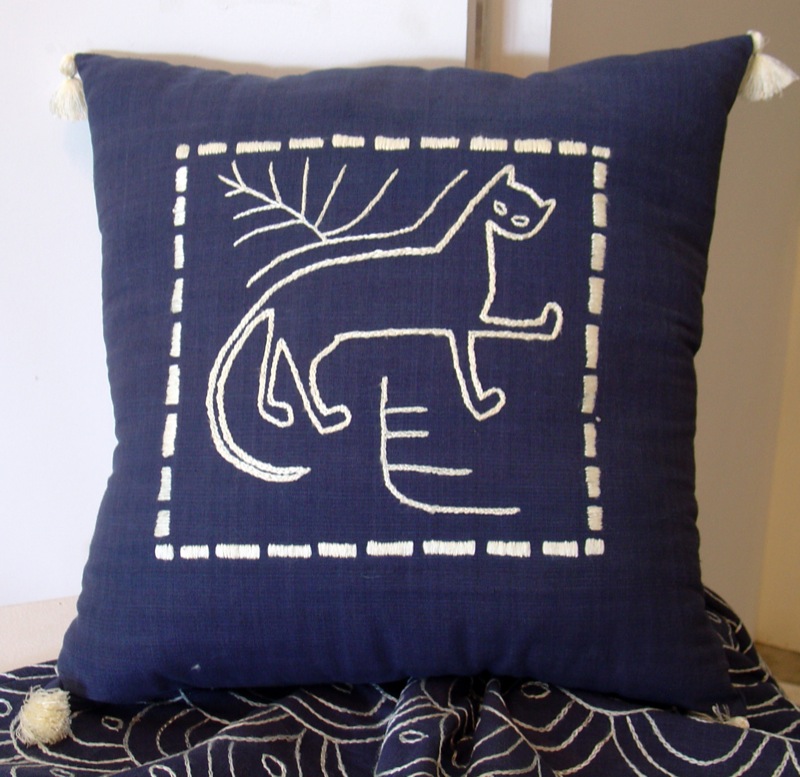 Just kidding. Those are actually traditional leg tattoos worn by Northern Thai men well into the twentieth century. Since boys usually got kicked out of the bedroom out onto the porch to sleep with grandpa around the age of nine, many, as they do today, ended up becoming novitiates at a local wat. Those that decided the life of celibacy was not for them left during their teens and joined a trade caravan, and went looking for a reasonably sized rice house. The leg tattoos were their cultural currency: the fish scale patterns endeared them to potential mother-in-laws on the northern routes up into China, while the cats worked in the southwest and out to the coast, where boats came from Sri Lanka.
Just kidding. Those are actually traditional leg tattoos worn by Northern Thai men well into the twentieth century. Since boys usually got kicked out of the bedroom out onto the porch to sleep with grandpa around the age of nine, many, as they do today, ended up becoming novitiates at a local wat. Those that decided the life of celibacy was not for them left during their teens and joined a trade caravan, and went looking for a reasonably sized rice house. The leg tattoos were their cultural currency: the fish scale patterns endeared them to potential mother-in-laws on the northern routes up into China, while the cats worked in the southwest and out to the coast, where boats came from Sri Lanka.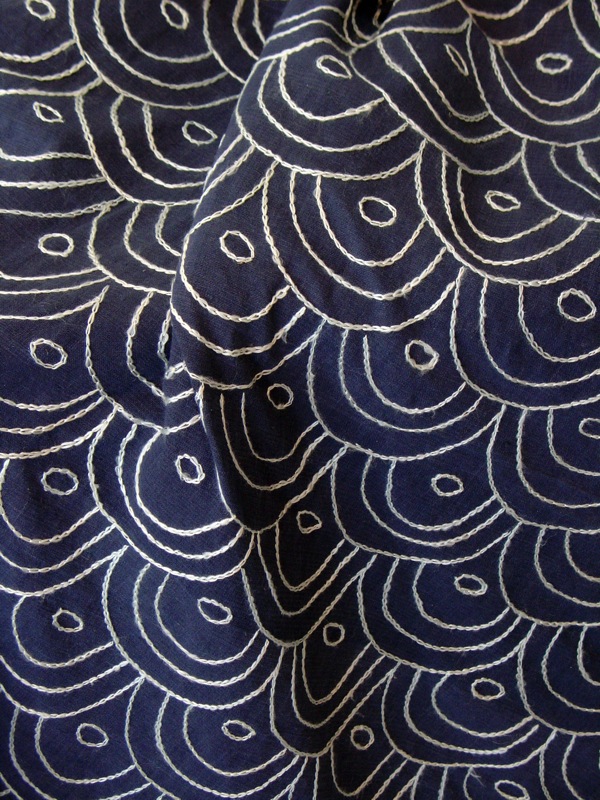 A dedicated team of women from a crafts circle somewhere outside of Chiang Mai helped finish all these fish scales in time.
A dedicated team of women from a crafts circle somewhere outside of Chiang Mai helped finish all these fish scales in time.Day Thirteen:
In the morning all the participants gave brief presentations of their projects and prior work. The westerners went last. I wish everyone had a website for me to refer you to, but the only ones that do are Dave Besseling and Ofer Zick (though if anyone knows of any more I'll happily take corrections). For dinner we headed to a fancy open air restaurant that specializes in Lanna cuisine. And then the fun began.
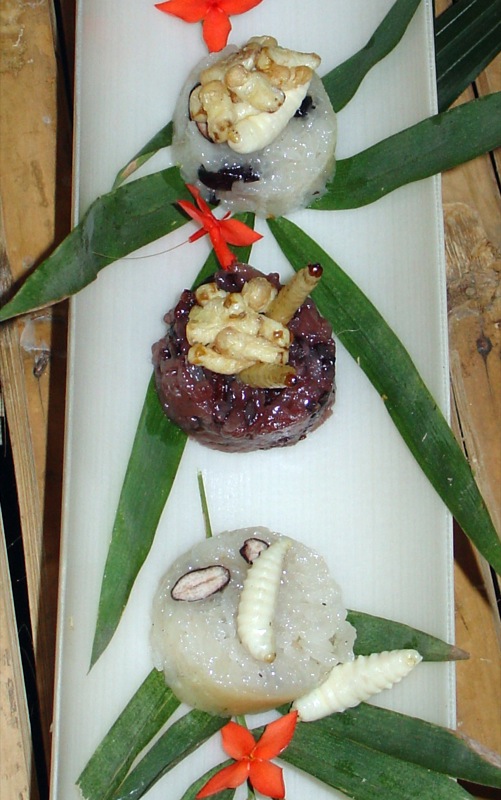 Yes these are what you think they are. Bug hors d'oeuvres. I ate the one on the bottom. It popped, and left a weird film on my teeth, but it tasted OK. To our surprise, no amount of teasing from Ofer and Dave could get the Thai art and design students to try one. Instead they burnt their's to crisps in the candles.
Yes these are what you think they are. Bug hors d'oeuvres. I ate the one on the bottom. It popped, and left a weird film on my teeth, but it tasted OK. To our surprise, no amount of teasing from Ofer and Dave could get the Thai art and design students to try one. Instead they burnt their's to crisps in the candles.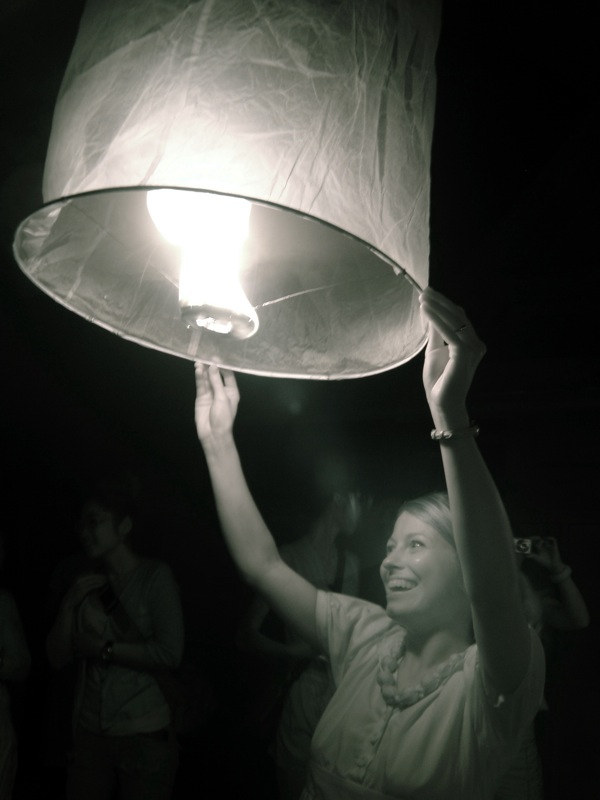 The highlight of the evening was setting off hot air balloons over the pond.
The highlight of the evening was setting off hot air balloons over the pond.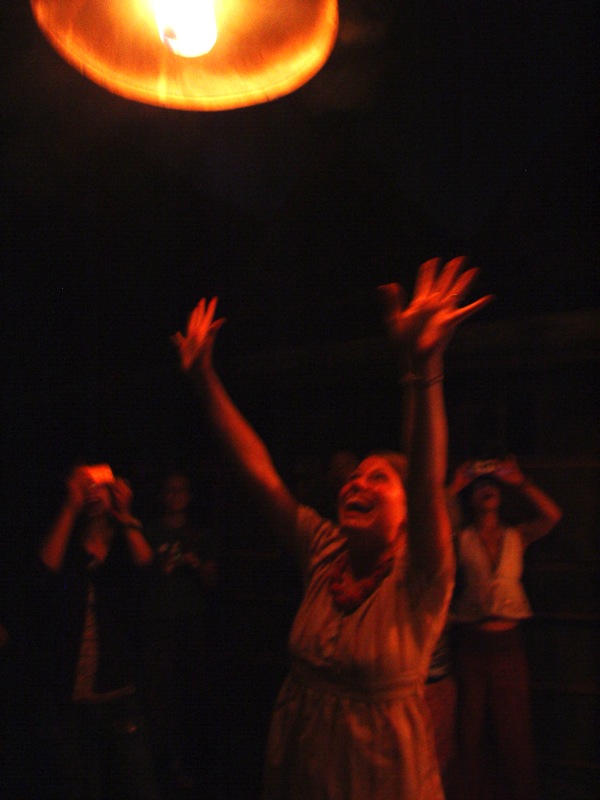 A couple got caught in a tree, but thankfully they worked their way out before catching anything on fire.
A couple got caught in a tree, but thankfully they worked their way out before catching anything on fire.These lovely ladies (oops, laddies i mean) were probably a close second or third after the balloons and bugs. It kind of surprised us how common transvestitism is here in Thailand, but it has none of the stigma associated with it in the states. There's matriarchy for you. Everybody just gets along.
